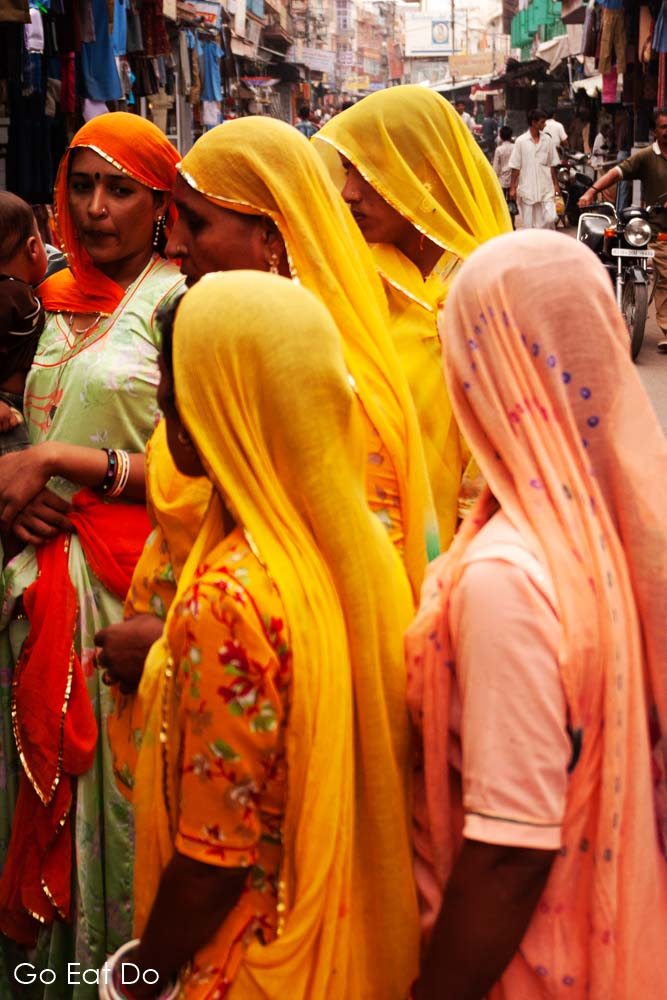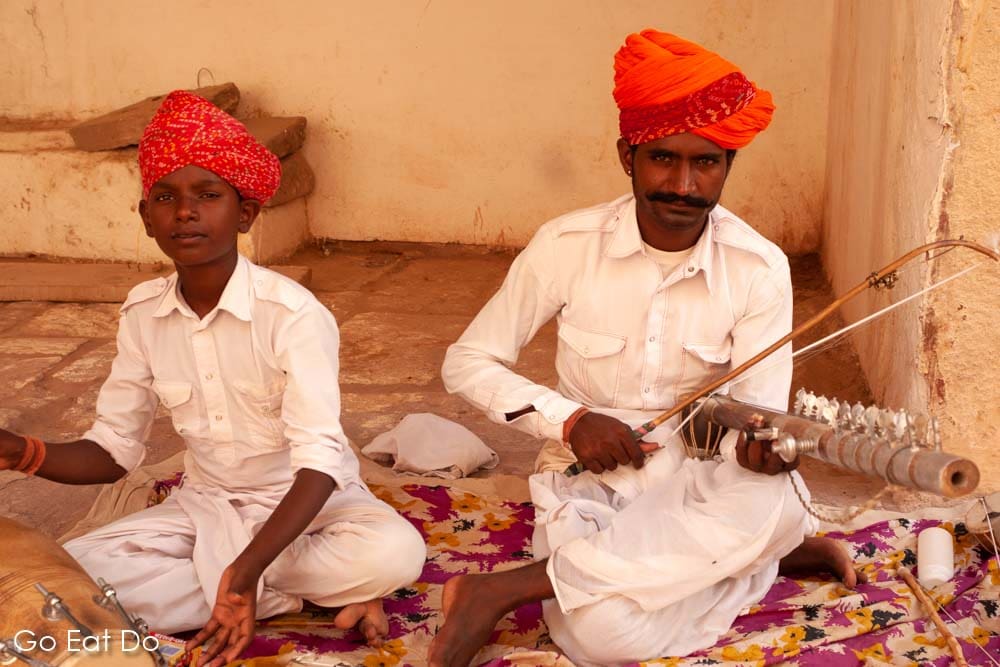Stuart Forster visits Jodhpur the blue city of India and looks into why the Rajasthani destination got its nickname.
Disclosure: Some of the links below and banners are affiliate links, meaning, at no additional cost to you, I will earn a commission if you click through and make a purchase.
Jodhpur is the second largest city in the Indian state of Rajasthan. It has long been a popular destination among international tourists. Surprisingly few visitors, though, know the origins of its nickname, ‘the blue city’.
The old town is a wonderful example of vivid colours providing a photogenic backdrop to everyday life. Blue is the dominant colour on buildings in Jodhpur’s historic centre.

Visiting Jodhpur in Rajasthan
On arrival in Jodhpur, it isn’t obvious why this busy city is so closely associated with just one colour. It may be known as ‘the blue city of India’ but many other hues can also be seen on Jodhpur‘s streets and in its bazaars.
The majority of Rajasthani women wear long, colourful skirts. You can see this while visiting the shops of the Nai Sarak and examining wares on the stalls of the Sardar Market.
Eye-catching, bright oranges and yellows are popular colours for fabrics. Additionally, the Rajasthani tradition for women to cover their heads with scarves made of light materials in complementary hues adds to the multi-coloured impressions.

That’s exacerbated by tribal men wearing sizeable turbans. The yellows and reds of their traditional headgear is just as much a draw to the eye as women’s garments.

Jodhpur sightseeing
To understand why Jodhpur is known as ‘the blue city of India’ wander away from the marketplaces and new town. Head into the older quarters of Jodhpur where many of the houses are painted blue.

That, obviously, explains why Jodhpur is known as ‘the blue city’. Yet even experienced local tour guides don’t agree on the underlying reason as to why blue was chosen.

The blue city of India
Some experts say that the colour blue is associated closely with the Brahmins, India’s priestly caste. The blue houses of the old city belong to families of that caste. Consequently, you might well hear the properties referred to as ‘Brahmin Houses’.
There’s also an argument that termites are the real reason. Proponents of this theory believe that, historically, termites caused significant structural damage to a large number of buildings in Jodhpur.
The insects are said to have munched their way into the walls of dwellings and businesses. Residents struggled to get rid of the unwelcome guests. They repelled them and discouraged the termites from returning and avoided further damage by adding chemicals to their standard whitewash. Copper sulphate resulted in the colour blue.

Jodhpur blue houses
Those who promote the termite theory say that it’s a mere coincidence that many of the blue houses are owned by Brahmins and that numerous families from other castes also live in blue-painted homes. Some even rubbish the theory that chemical compounds are added to the colour wash, swearing that Jodhpur is a fine example of an environmentally-friendly city. Nothing but indigo, a natural dye, is the cause of the blue tint, they say.
Ultimately there may be no way of establishing the true reason why the houses are blue. Strolling through the streets of the old town does, however, give you opportunities to peek into the homes. Many of the doorways remain open, allowing an insight into moments of everyday Rajasthani family life.

Visiting Jodhpur’s Mehrangarh Fort
For centuries Jodhpur was protected by Mehrangarh Fort. The foundations of the fortress were laid in 1459 on the orders of the city’s founder, Rao Jodha, after whom Jodhpur is named. One of the best places to view the blue houses is from the ramparts of Mehrangarh Fort.

For an overview of Jodhpur, nothing beats heading up to Mehrangarh Fort. A winding lane leads up the 125-metre (410-feet) high hill, on which the ancient fortress is built. The walls are 36 metres (118 feet) high in places, providing additional elevation.

From the wall’s fire steps, you can look out and appreciate how many of the houses in Jodhpur are blue.
Whatever the reason for the prevalence of blue, that colour dominates the facades of houses. Anyone looking out from Mehrangarh Fort over the flat roofs of Jodhpur will realise that ‘the blue city of India’ is indeed an apt nickname.

Hotels in Jodhpur, Rajasthan
Looking for accommodation in Jodhpur? Search for hotels via the map below:
Map of Jodhpur
The Google Map below shows the location of Jodhpur in Rajasthan, India. Zoom into the map to see details within the city:
Books about Jodhpur and Rajasthan
Planning on visiting Jodhpur and Rajasthan? You may find the following books worth reading:
Lonely Planet travel guide to Rajasthan, Delhi and Agra.
Berlitz Pocket Guide Rajasthan.
Christine Chitnis is the author of Patterns of India: A Journey Through Colours, Textiles, and the Vibrancy of Rajasthan.
Further information
See the Incredible India website for information about tourist attractions and reasons to visit India.
Enjoy this post about Jodhpur the blue city of India? You may also find this post on a heritage walk in Delhi worth reading.
Photos illustrating this post are by Why Eye Photography.
Stuart Forster is an award-winning travel writer. His work has been published by Discover India, Rough Guides and The Sun.
If you enjoyed this post, please sign up for the free Go Eat Do newsletter? It’s a hassle-free way of getting links to posts once a month.
‘Like’ the Go Eat Do Facebook page to see more photos and content.
A version of this post was originally published on Go Eat Do on 15 January 2014.





Rajesh Verma
January 31, 2014 at 12:08Jodhpur is very beautiful and heritage city of Rajasthan. Also a one of the most hot spot tourist destination all over India due to its beauty.
Julia Deichmann
March 4, 2017 at 06:29We’ll be heading to Jodhpur later this month. Really looking forward to seeing the city after reading this blog post.
Os Vincent
February 10, 2018 at 21:27It seems that the use of blue to deter insects was widespread, also beyond India. Interesting post.
Stuart Forster
February 11, 2018 at 19:43I’ll have to look into that. I found Jodhpur fascinating.
Amber Stephens
June 18, 2018 at 05:09I had no idea why Joghpur is known as the blue city! I hope to combine a visit with a trip to see the Taj Mahal during a Golden Triangle Tour.
Stuart Forster
June 19, 2018 at 13:20That sounds a good way of visiting!